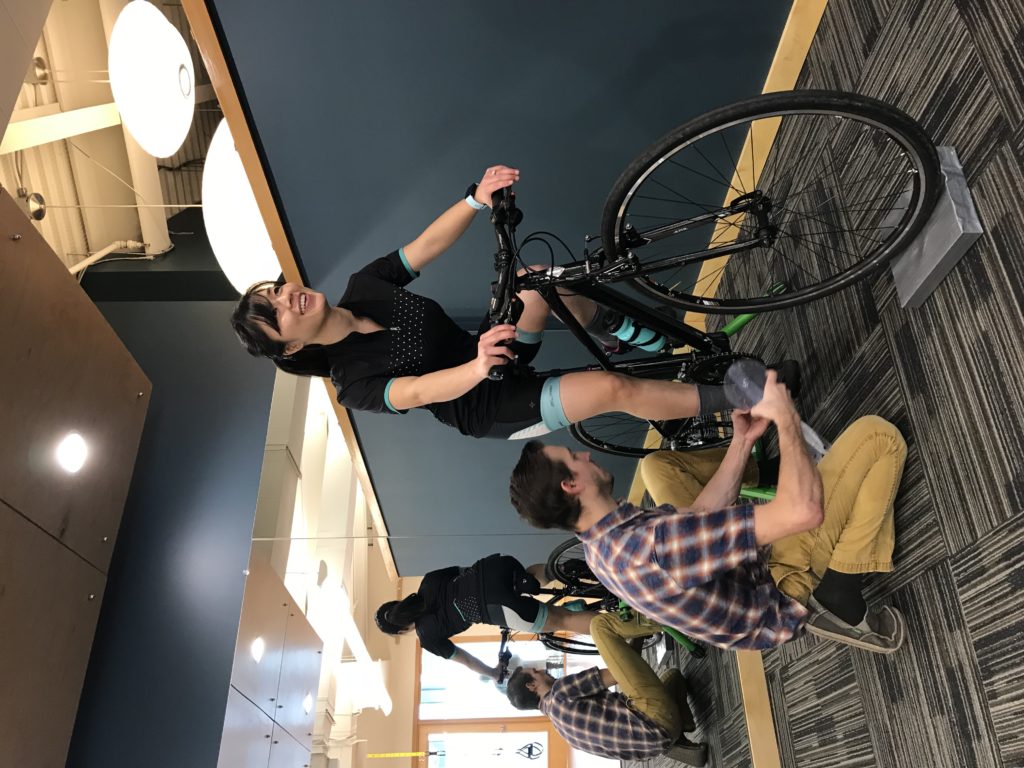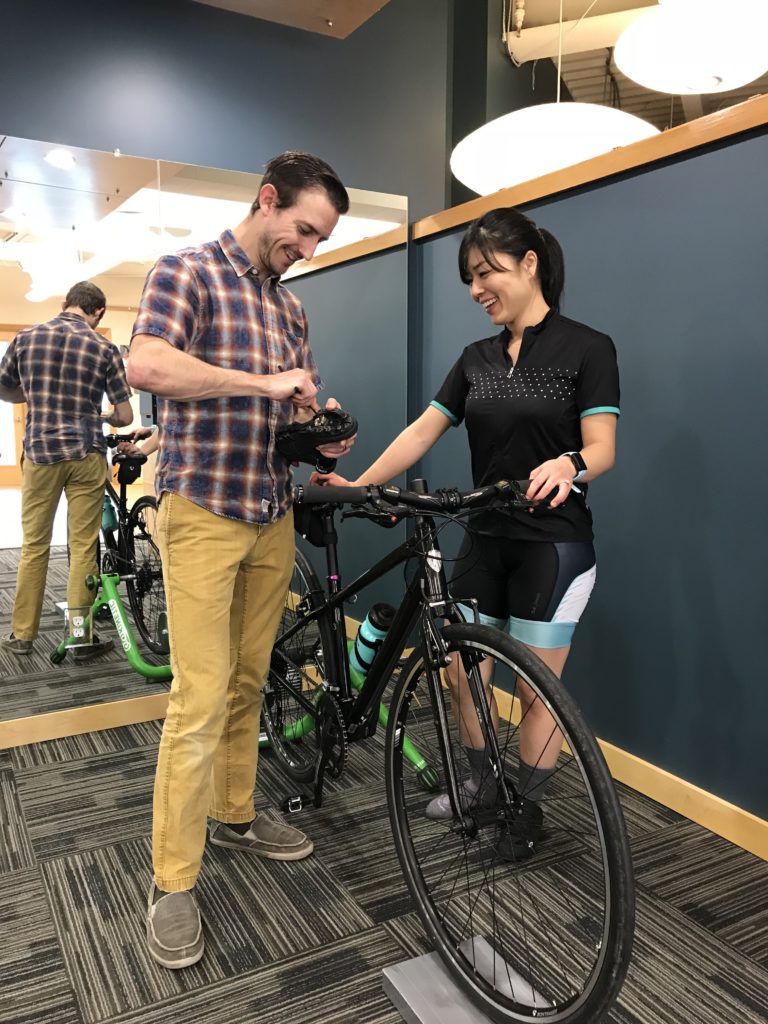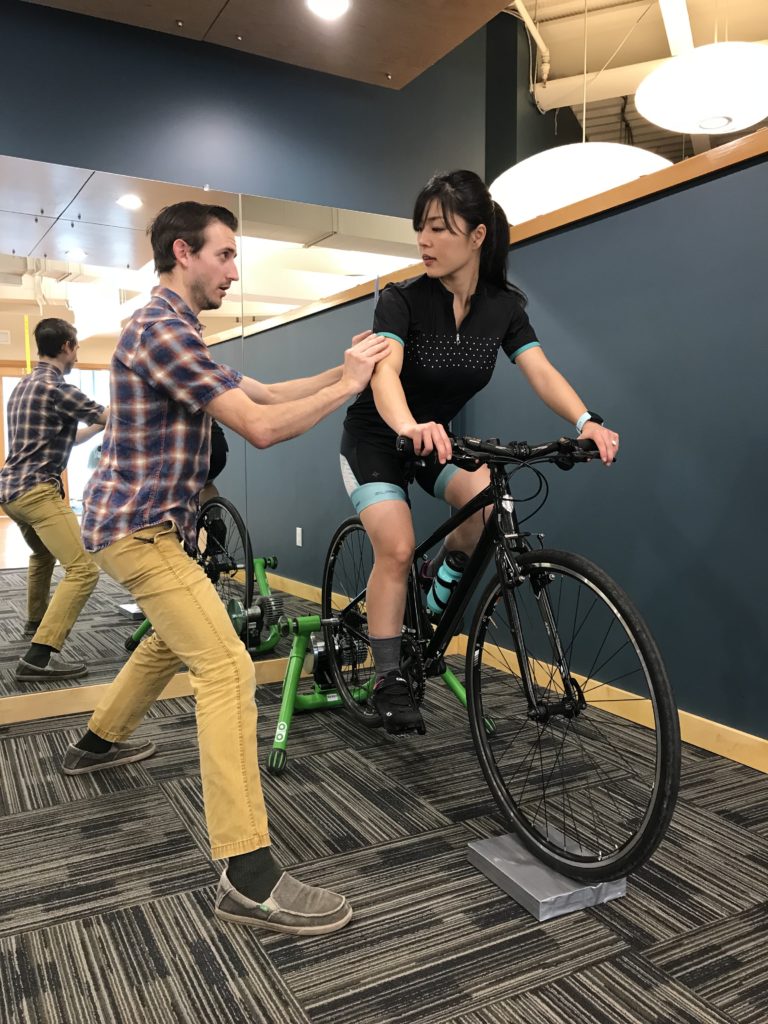Fit Matters for ALL Cyclists

By Scott McClave PT, DPT
Many understand that a “bike fit” is important for all cyclists, but may not understand why. Whether you enjoy commuting, racing on the road, or ripping up single track, how you fit on the bike will influence performance, injury incidence and comfort. This article explains what a bike fit is and why it’s critical to your performance and enjoyment on the bike.
Let’s start off with what a bike fit is and isn’t. Although common marketing will tell us otherwise, a bike fit is not some “off the shelf” product or method that will solve all of our cycling related issues. I’d argue that bike fitting is a consultative process with a skilled individual that has a background in three areas: technical knowledge of the bicycle, injury rehabilitation, and sport performance. I’m biased in the argument that skilled and well trained physical therapist with the passion and technical knowledge of cycling is the ideal professional to perform a bike fit.
A poor bike fit can affect mechanical efficiency, robbing you of valuable wattage. Or worse result in an overuse injury. Cycling should be a fun and enjoyable part of living an active, healthy lifestyle, so having a proper fit is a critical component for getting the most out of every ride.
Cycling is a very repetitive, low impact form of physical activity; that reason it has numerous health benefits including cardiovascular and musculoskeletal systems. If the saddle, handlebars, or cleats are improperly positioned, joints and soft tissues can be strained beyond their tolerances and injury can occur. Furthermore our pedaling techniques and posture on the bike can also contribute to pathological biomechanics and can set tissues up to fail. Common overuse injuries from a poor bike fit and technique include:
- Tendinopathies of the lower extremity affecting the hip, knee, and ankle
- Low back strain
- Muscle strains
- Femoral acetabular impingement syndrome
- Patellofemoral tracking disorders
- Cervical radiculopathy
- Ulnar and median neuropathies
- Urinary incontinence
- Pelvic neuropathies
- Sexual dysfunction
- Postural dysfunction off the bike
As a physical therapist I’m in the business of optimizing human movement and the body is quite the complex machine. At its core, the bicycle is a pretty simple machine when compared to the human body. A keen sense of understanding is required in both the human body and the bicycle to facilitate an optimal outcome.
Sometimes the most minor adjustment can make a world of difference. When performing a bike fit, attention to detail is required to get the most out of each pedal stroke. Let’s do the math, the average cyclist pedals somewhere between 85-95 rpms each minute. If that person spends two hours on the bike, that’s well over 10,000 pedal stroked for that ride. Imagine if your saddle was too low or your cleats were poorly positioned, that amount of repetition with movement could place a lot of undue stress on the body.
Mountain bikers are often underserved when it comes to bike fitting. A commonly held belief is that getting a fit is reserved for “roadies” rocking the lycra. I couldn’t disagree more. The mountain bike has its own set of complexities including: suspension setup, wide variability in bike geometry, and sport specific skills for descending and managing variable terrain. When I’m performing a fit with a mountain biker, the riders’ goals and what type of trails they ride have an influencing role in the bike fitting process. A poorly positioned saddle can cause just as much harm on a mountain bike as on a road bike.
Gender considerations are very important as there are obvious anatomical differences between males and females. Therefore, the component selection for our key contact points: shoes, saddle, and handlebars/grips need to reflect that. A well designed saddle that is properly positioned is critical for the pelvic health of both females or males. While not all saddles are created equally the bicycle industry has done an exceptional job creating a wide array of saddles to meet a wide variety of needs. You very well could be sitting on an exceptional saddle, but if it is not properly positioned you might be increasing your likelihood of pelvic floor dysfunction. Afterall the pelvic floor is supported by a network of skeletal muscles, similar to how your quadricep and glutes support you hips and knees.
When I’m working with a client on their bike fit there are several unique considerations that I take into account including: current strength and flexibility, pedaling technique, adjustability of the bicycle, postural habits, experience level, and most importantly the goals of my client’s. On my commuter rides into Stride Physio and on my weekend ride I’m constantly observing individuals who are suffering from a poor bike fit and can only imagine the various aches and pains they are experiencing- if only they knew there was a solution! Let this be your PSA that fit matters and if you are having cycling concerns or looking to get the most out of your cycling experience, I’m gladly here to help.


